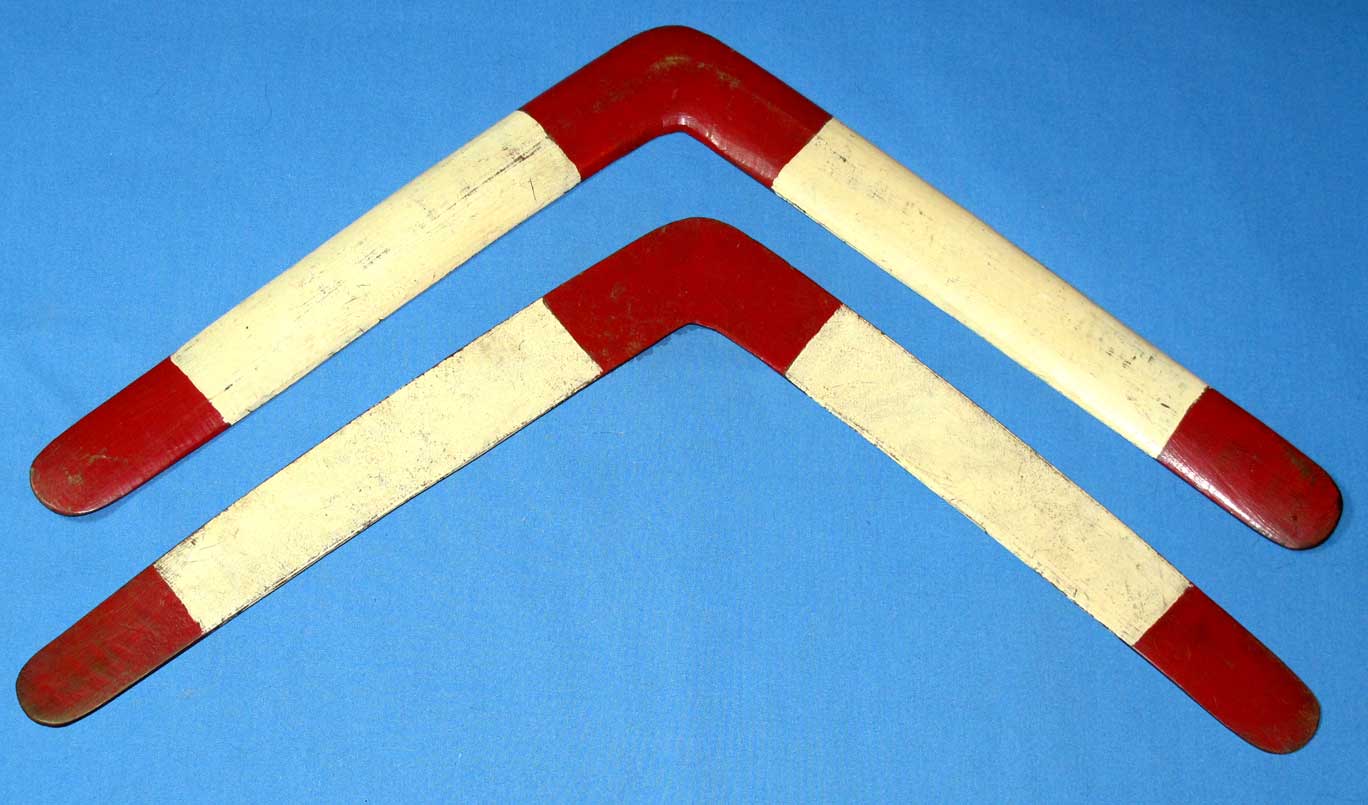Item AG76
This Item was Sold on 27 March
2015 for $161
Other collectable boomerangs for sale can be found on the
Collectable Boomerangs link.
Historical Pricing information for this item and similar collectable boomerangs can be found on the Boomerang Pricing Guide
|
This traditional boomerang was hand carved in the 1940s by long distance champion Frank Donnellan. Made out of a very dense and stiff material called Whalebone, a composite of sawdust and whale baleen. Whalebone was made in Australia in the 1930s and 1940s to form sheets of shock absorbing liners for the inside walls of box cars. This boomerang is painted red and white on both sides and the thickness is 6.5 mm. This boomerang is in mint condition with a fine patina from use, but no dings cracks. This boomerang has been tuned so that there is gentle dihedral along the length of the blades. Al Gerhards acquired it in Australia in 1981. A wonderful and rare collectible.
Frank Donnellan was one of Australia's earliest boomerang champions and record holders. Frank did amazing feats and he claimed to be the holder of "all records" long before there were any official boomerang clubs or sanctioned competitions. On May 4th, 1934, Frank threw a long distance boomerang of his own construction at Centennial Park, Sydney in the presence of "Sun" news representatives. The boomerang circled a pole 140 yards away and then it was caught on the return. This, and other feats included throwing over Watson's Bay Gap one hundred yards over the water and caught on the return and throwing off the "Sun" Office Buildings seventy-five yards out over the city, and caught on the return. Frank made and sold boomerangs well into the 1950s. His commercial models were constructed out of plywood and his long distance models were constructed out of Whalebone, a composite material similar to Paxolin, but made out of pressed whale baleen and wood products. Whalebone was used by the railroad companies to line the inside of railroad box cars for shock absorbing purposes. Frank obtained his whalebone material by jumping into empty box cars as trains passed by his home and he would then rip out a sheet and take it home to make his long distance boomerangs. Frank's commercial boomerangs were plentiful in the 1940s and early 1950s, but they have become quite scarce and they are hard to obtain by contemporary collectors, especially in mint condition. |

How to Order | Back to: Boomerang Catalog | Collectable Boomerangs | Boomerang Pricing Guide | contact: Ted Bailey